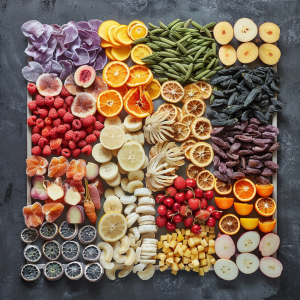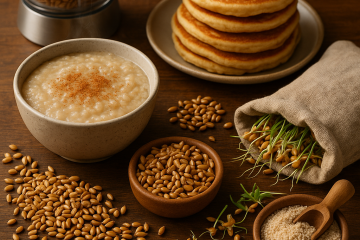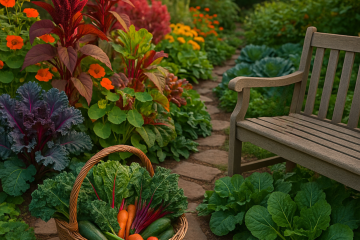 Tired of feeling like you’re wasting expensive freeze-dried food?
Tired of feeling like you’re wasting expensive freeze-dried food?
I’ve heard it a hundred times. “I hate seeing all of those crumbs at the bottom of my cans. It’s so much waste!” This is the standard concern that a lot of good boys and girls have who actually USE their freeze-dried products instead of just storing it in some deep, dark corner.
“Why would you use it?? It’s expensive!” you say? Oh, horse feathers! You need to actually use what you have so that you’re completely familiar working with it, and eating what you know you like with it. Also, you’ll waste your money if you just buy it and store it.
I had a friend who recently was packing up her house to move. She was one of those “buy it and store it and never think of it again” kind of gals. (Just because she’s my friend doesn’t mean she listens to everything I say. Hee hee) Unbeknownst to her, the serious mold problem that a dripping hose caused in her basement 8 years ago ended up impacting all of her food storage as well. It was awful. Damp, rusted cans with mold in them. Yuck! Unfortunately if she had been going into it and using it regularly, she could have prevented that. PLUS, contrary to popular opinion, freeze-dried produce is NOT more expensive than fresh. It’s actually less expensive as I discuss in this article I wrote. http://www.preparednesspro.com/hidden-virtues-freezedried-produce So now that we’ve got that over with, how about we go back to my original question.
What should you do with all of those freeze-dried crumbs at the bottom of your cans? Create magic, of course! Gourmet, secretive, sensational, mind-blowing, delicious magic cuisine that will be a far cry from what most people think of when they think of “food storage.”
You see, those leftover little crumbs add up over time. Even two cans worth of a particular crumb can perform a culinary miracle in my kitchen. So, when I am through to the end of a can (or jar, however the case may be), I simply put the leftover tidbits in a Mason jar and vacuum seal it closed with electric Mason Jar sealer. This is a hardcore habit in our household. These bits and pieces may not be pretty like their sliced or whole predecessors, but they will indeed become something gorgeous and oh, so unexpected. I’m going to give you 72 ideas of how you can use these leftovers. My list is primarily fit for fruits, but once you see the list of suggestions, you’ll see that the opportunities will easily crossover into vegetables as well.
First of all, let’s give you some fundamental suggestions as to how to use them. You can use them dry, as a surprisingly tasty sprinkled topping. Imagine a delicious coconut cream cupcake with bits of pineapple crumbs sprinkled on top. Get ready for some amazed looks when people taste them though. You see, pineapple is 80 to 90 percent water. So when you’re sprinkling straight, completely dry, freeze-dried crumbs of pineapple on top of your cupcake, you’re putting a LOT of flavor on there. See, that’s what’s SO FUN about this use. It takes people by surprise. You can be totally sneaky with it and it can be one of those recipes that everyone is begging you for. Yep, you could be one of THOSE kinds of cooks.
If you’ve seen any of the cooking shows, you see that there are a few star chefs out there that are famous for making decadence combined with science. Normally, if one of these fancified chefs was going to put pineapple crumbs on a cupcake, he’d puree the pineapple, lay it on a cookie sheet, and then put it in the freezer and then crumble it up OR hit it with some nitrogen to freeze it immediately and then crush it up. But regardless, even a top chef isn’t going to get the same results as the freeze-drying process which expels the water and leaves behind the amazing flavor.
I’ll never forget the first time I tasted something with freeze-dried fruit in it. It was a bunch of fruit mixed into a whipped cream base. I still remember the taste. The fruit tasted like it had just been picked at its prime right out of the garden! Oh—SO good!!!
So, just straight, dry, and in crumbs is one of the ways to use it. Another is to go ahead and reconstitute it. O.K. Are you ready for this little trick? Most people think of using water when it’s time to reconstitute freeze-dried produce, but you can be craftier than that for additional pizzazz. How about you reconstitute the produce with juice, broth, or stock? Another tip is that when you reconstitute with water, you’re going to typically have some water left over from the rehydration process. Whatever you do, don’t throw it out! One of my favorite little tricks is when I’m making a fruit salad with whipped cream, I like to use the water that I intentionally have left over from reconstituting the raspberries or strawberries and use THAT water to make my fluffy cream! It gives it a beautiful color that’s REAL, not some food dye, and it gives an additional layer of flavor that a top chef would have to go to a lot of effort to pull off otherwise.
When you’re reconstituting the crumbs, you get to determine the consistency. Sometimes, I want to make a syrup that I can, so that later I am able to make raspberry lemonade. In this case I would be reconstituting it in hot water in a saucepan over medium high heat, with a little sugar until I have the syrup consistency I want. Sometimes I want it more like a thick fruit gel like you see in fruit Danishes and pies. Sometimes I’m going to want to create a drink with it such as a fruit mocktail. (Oh, and another tip…if you’re making a nice beverage, wet the top of the glass with water or lemon or lime juice and then dip the rim of the glass in your dry, freeze-dried fruit crumbs. Although I guess you could do the same if you were serving a fancy brunch that included freshly made carrot juice. Yeah, Martha Stewart won’t have anything on you!)
No matter how you dilute it though, it’s going to have a much more powerful flavor than it would have if you were to just use produce from the grocery store. That produce is actually picked BEFORE it’s prime so that it can ripen en-route to the warehouse and then on to the distribution centers and then to your grocery store. But, it doesn’t matter in the end, in my opinion. It still ends up tasting “old” to me. That’s just one of the reasons why our produce doesn’t last very long once it hits our kitchens. The taste of freeze-dried produce is simply incomparable. You’re in for a treat every single time.
To reconstitute freeze-dried produce to take the place of pureed produce in a recipe, most freeze-dried produce can be reconstituted in about 10 minutes as it soaks in a 2:1 ratio of water to freeze-dried produce. Also, just as a reminder, your freeze-dried produce should be good for 20 years if stored in a cool, dry, dark place before it’s opened. And after it’s opened you can expect to have the taste, texture and quality of nutrition for 18 months thereafter. (Once I open mine, it doesn’t typically get the chance to last that long.) Remember, if you’re relying a great deal on freeze-dried foods, you need to make sure you take the water needs into account when you’re storing up your water.
Here are your 72 ideas as promised (with the occasional comments to enhance and inspire your creations)
1. Juice
2. Sweet potato dish (Pineapple! Orange! Woohoo!)
3. Soufflés (YES! You can do a soufflé in a solar oven so don’t give me any guff!)
4. Fruit Danish
5. Parfait
6. Quiche (savory, of course)
7. Baby food (that’s actually GOOD for baby!)
8. White chocolate fruit bark
9. Crumble dessert topping mix (such as raspberry or blueberry crumble!)
10. Pudding
11. Sweet syrups used for pancakes or drinks
12. Mousse (White Chocolate Mango Mousse is now my favorite!)
13. Jams/Jellies (I seem to have less guilt when I make jam from the crumbs than the whole fruit even though it is still typically less expensive.)
14. Yogurt
15. Custard
16. Frosting
17. Cream Pies or Fruit Pies
18. Dip for veggies, fruit, or even chicken wings
19. Marinades
20. Sugar substitute
21. Chutneys/pepper jellies
22. Homemade flavored gelatin
23. BBQ sauces
24. Flavored lemonades
25. Complimentary component to most Asian cuisines such as rice desserts or stir fries
26. Quinoa or couscous salads
27. Add to warm cereal such as oatmeal, wheat berries or cream of wheat
28. Hot or cold soups
29. Puree’
30. Cake/cupcake flavoring without the “fake” taste
31. Cobblers/crisps
32. Mango Sauce (like applesauce) My great grandma made it all the time in Florida because she had such an abundance of mangoes growing in her back yard. She would make it with mostly green mangoes though, but the taste is the same when I make it with freeze-dried mangoes so she must have put a lot of sugar in her recipe!
33. Cheesecake (with a thick fruit spread on top that compliments the flavor such as lemon cheesecake with blueberry Purée .)
34. Salsa
35. Brule’, flan, or custard
36. Frozen drinks/smoothies
37. Chiffon or pound cakes
38. Margaritas or daiquiris (remember the glass rim)
39. Salad dressings (I love a peach poppy seed dressing!)
40. Ice cream
41. Hot Sauce
42. Sauce for protein such as fish, beef, pork, fowl and lamb
43. Pastry Filling
44. Muffins
45. Tasty and unique decoration for pastry/desserts
46. Flavored creams (Imagine how unique it would be to make homemade marshmallows with the addition of the crumbs from your freeze-dried sweet potatoes and then put that on top of your favorite sweet potato casserole! Wow!!
47. Flavored butters (I’m secretly addicted to my Apricot Cardamom Butter on hot scones!)
48. Rice desserts (like Thai mango rice) or tapioca
49. Flavored cream cheese spread
50. Flavored sour cream (this is a great way to use the more savory crumbs. It can take your scalloped potatoes to a whole new level!)
51. Fruit salad, of course—with a fruit taste that they just can’t identify what the secret ingredient is. Oh and remember that freeze-dried bananas don’t go brown as quickly as the fresh do.
52. Sweet or savory glazes
53. Sweet or savory breads
54. Cookies (fruit flavoring or fruit filled)
55. Bagels
56. Sherbets and sorbets
57. Sweet granola add-in
58. Suckers/lollipops/hard candy
59. Fruit tarts
60. Fritters
61. Homemade “pop-tarts”
62. Pastas (with veggie crumbs such as spinach, carrot, tomato)
63. Fudge (you’d be surprised what wonderful tastes that chocolate pairs well with, including savory. One of my favorite fudge experiments was mandarin orange and lavender chocolate fudge!)
64. Other types of creative salads such as sliced cucumbers in a mango and white vinegar sauce with a touch of honey, white pepper and a pinch of cayenne pepper.
65. Kick up any curry dish

Freeze-dried produce
66. Caramels (Oh my!!)
67: Breakfast cakes/rolls/strudels
68. Donuts (cake donuts are my favorite for the blueberry and strawberry crumbs!
69. Pancakes/waffles
70. Mascarpone cheese
71. Vinegar (You’ll be fermenting the crumbs in water and sugar.)
72. Wine (fermentation needed, of course) You’d be surprised how delicious you can make salmon with a homemade mango cooking wine!
There! Did I miss anything? *grin* (Well, actually, yes, I did.) A reader gave this great idea.
Bonus #73. Sprinkle it on your pet food servings to change things up a bit, add additional nutrition. (Be sure that you’re mindful of what dogs and cats aren’t able to eat though. Not every produce is good produce for our furry family members) There–now don’t you feel special that you only thought you were going to get 72 ideas and instead you got 73? hee hee
Have you begun to think of “food storage” a little differently than it’s ho-hum, low-level reputation? Any excellent chef knows that there’s creativity just waiting to be found in these crumbs.


3 Comments
LINDA HART · January 18, 2014 at 1:42 am
*awesome* ideas, thanks!!!
*awesome* ideas, thanks!!!
Susan · January 18, 2014 at 2:14 pm
I sprinkle the crumbs on the
I sprinkle the crumbs on the dog’s dry food. A little goes a long way and he loves it!
Preparedness Pro · January 18, 2014 at 9:59 pm
Excellent idea! You’d think
Excellent idea! You’d think that I would think of that seeing as I make my own dog and cat food! I’m going to add it to the list! Thanks for sharing!
Comments are closed.